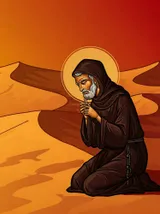What is the Feast of All Saints' Day Part 2: Western Christianity
Chapter Text
The holiday of All Saints' Day falls on 1 November and is followed by All Souls' Day (a day that commemorates all the faithful departed.) on 2 November. All Saints' Day is a Solemnity in the Roman Rite of the Catholic Church (a solemnity is a feast day of the highest rank that celebrates key mysteries of faith).
History
From the 4th century, there existed in certain places and at sporadic intervals a feast day to commemorate all Christian martyrs.[24] It was held on 13 May in Edessa (Northern Greece), the Sunday after Pentecost in Antioch, and the Friday after Easter by the Syrians.[25] During the 5th century, St. Maximus of Turin preached annually on the Sunday after Pentecost in honor of all martyrs in what is today northern Italy. The Comes of Würzburg, the earliest existing ecclesiastical reading list, dating to the late 6th or early 7th century in what is today Germany, lists the Sunday after Pentecost as dominica in natale sanctorum ('Sunday of the Nativity of the Saints'). By this time, the commemoration had expanded to include all saints, martyred or not.[26]
On 13 May 609 or 610, Pope Boniface IV consecrated the Pantheon at Rome to the Blessed Virgin Mary and all the martyrs, ordering an anniversary;[11] the feast of dedicatio Sanctae Mariae ad Martyres has been celebrated at Rome ever since. It is suggested that 13 May was chosen by the Pope and earlier by Christians in Edessa because it was the date of the Roman pagan festival of Lemuria, in which malevolent and restless spirits of the dead were propitiated. Some liturgiologists base the idea that Lemuria was the origin of All Saints on their identical dates and their similar theme of “all the dead”.[a]
Pope Gregory III (731–741) dedicated an oratory in Old St. Peter's Basilica to the relics “of the holy apostles and of all saints, martyrs, and confessors, of all the just made perfect who are at rest throughout the world”.[27] Some sources say Gregory III dedicated the oratory on 1 November, and this is why the date became All Saints' Day.[28] Other sources say Gregory III held a synod to condemn iconoclasm on 1 November 731, but he dedicated the All Saints oratory on Palm Sunday, 12 April 732.[29][30][31][32]
By 800, there is evidence that churches in Ireland,[33] Northumbria (England and Scotland) and Bavaria (Germany) were holding a feast commemorating all saints on 1 November.[34] Some manuscripts of the Irish Martyrology of Tallaght and Martyrology of Óengus, which date to this time, have a commemoration of all saints of the world on 1 November.[35][26] In the late 790s, Alcuin of Northumbria recommended holding the feast on 1 November to his friend, Arno of Salzburg in Bavaria.[36][37] Alcuin then used his influence with Charlemagne to introduce the Irish-Northumbrian Feast of All Saints to the Frankish Kingdom.[38]
The 1 November All Saints Day was made a day of obligation throughout the Holy Roman Empire in 835, by a decree of Emperor Louis the Pious, issued "at the instance of Pope Gregory IV and with the assent of all the bishops",[27] which confirmed its celebration on 1 November.
Sicard of Cremona, a scholar who lived in the 12th and 13th centuries, proposed that Pope Gregory VII (1073–85) suppressed the feast of 13 May in favour of 1 November. By the 12th century, 13 May had been deleted from liturgical books.[26]
The All Saints octave was added by Pope Sixtus IV (1471–84).[27] Both the All Saints vigil and the octave were suppressed by the Liturgical reforms of Pope Pius XII in 1955.[26]
Halloween celebrations
Being the vigil of All Saints' Day (All Hallows' Day), in many countries, such as Ireland, the United Kingdom, the United States and Canada, Halloween is celebrated on 31 October.[42] During the 20th century, the observance largely became a secular one. Some traditional Christian groups have continued to embrace the Christian origins of Halloween, such as wearing costumes based on saints, visiting a graveyard to pray, or praying the Dies Irae prayer at home. Remember, the eve of All Saints' Day is about remembering the saints and those Christians who have already died. So dressing up as saints or saying special prayers for those who have died is a great way to remember All Saints' Day!
Quiz
Review the questions and verify your answers by clicking the tab.
Was All Saints' Day always held on November 1?
No. It was held on various days, but mostly May 13th.
When was All Saints' made a day of obligation?
In the year 835 by Pope Gregory the IV.
Which kingdom first made All Saints' a day of obligation?
The Holy Roman Empire




